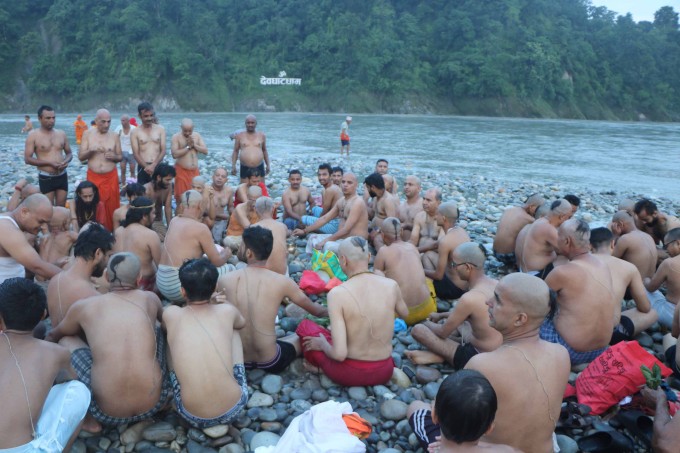There’s a woman who has seen the play “Pass Over” multiple times in just a few days. She sat with the audience one night, returned another day to stand at the back of the theater and once stayed backstage for an entire performance.
She’s not exactly a super fan. Don’t get her wrong, Dr. Blythe Adamson loves the play. But she was searching for something more than a jolt of live theater — ways to lower the risk of COVID-19 transmission.
Adamson is tasked with making the August Wilson Theatre safer on both sides of the stage. She has climbed onto the roof to inspect the new HVAC ventilation system that brings in fresh air and put portable air filters around the building. She has talked to stage managers to understand the movement of people backstage and hung out in the lobby during shows to look for chokepoints. She once spent a performance loitering at the bathrooms to see how patrons could spread the virus.
“Bringing together more than a thousand people into one room during a pandemic, as an epidemiologist, is something that I would not endorse if I didn’t really believe that it can be done safely,” said Adamson, founder of Infectious Economics, which has helped develop protocols for the NBA, the fashion industry and retail stores.
Adamson is part of a new group crucial to Broadway’s reopening this season: Professionals grounded in science tasked with ensuring a COVID-19 free zone.
“It’s all about reducing risk,” said Mimi Intagliata, director of production at Disney Theatrical Group who is in charge of its virus response. “We on Broadway aren’t going to get rid of COVID any more than anybody else. But it’s about reducing our risk so that we keep our folks as safe as we can and keep the show going.”
What Intagliata and Adamson are working out may become the protocols for many more theaters and touring productions in the short term and also good practices for years down the road.
“My hope for public health and for theater health is that these things can stay in theaters backstage. I think that long after COVID, this will likely reduce the spread of flu and RSV and other viruses. I hope that it will lead to a permanently healthier building for these employees to work in,” Adamson said.
Air is now constantly circulating inside the August Wilson Theatre, thanks to the placement of portable air fans and air filters with MERV-13 or HEPA technology. Adamson cut the number of people who can go backstage and recommended PCR testing for COVID-19 for everyone, regardless of whether they are vaccinated. All workers now wear KN95 masks.
Adamson endorses a policy of layered solutions — multiple, overlapping efforts that currently is grounded on rigorous personal testing and air filters everywhere. It means listening to the latest science and changing protocols if necessary. It means bracing for the inevitable positive test result.
“We are going to learn as we go, and we do our best effort in setting up the policies that we think are going to keep people the safest. But we have to be flexible and agile so that as we observe, we can change and update them,” she said.
The majority of Broadway’ 41 theaters were built before the Depression and are uniquely risky when it comes to transmission, with narrow backstage spaces, sealed-up windows and poor ventilation. Crowds — often older-skewing — gather outside bathrooms and at bars during intermission, while entrances and exits are limited.
Backstage, while stars get their own dressing rooms, most of the ensemble and understudies share tiny rooms, and the orchestra is crammed into a pit under the stage. Props and costumes are touched multiple times a night. New protocols are needed everywhere.
The Disney Theatrical Group has settled on five pillars to keep people safe: mandating vaccinations, frequent testing, plenty of PPE, regular hand hygiene and surface cleaning and upgrading HVAC systems.
Company members are PCR tested every day and there is additional antigen testing planned — far exceeding the union protocols. Because Disney has children in their companies, they are sticking with masking mandates backstage.
Examining every aspect of their productions has led to everything from touchless bathroom facilities to scrapping the tradition of actors signing autographs after shows. Managers even realized that two actors in one show who had no stage time together were sharing a dressing room, unnecessarily risking a bigger disruption if one fell ill.
“Those are the types of things you have to look at and shake up status quo to say ‘The things that we do out of hand without even thoroughly thinking about, we have to back up and reevaluate,’” said Intagliata.
“Pass Over” — the first play to open on Broadway since the pandemic shut down in March 2020 — was almost perfectly designed to show a path past COVID-19: It has just three actors, lasts just 90 minutes with no intermission and no musicians.
“This is the right show to be the first,” said Adamson. “If we can’t make it work with this one, then we don’t understand what works. With musicals, it will be harder. But we have the tools.”
Adamson suspects bigger shows will have to do PCR testing for all staff four to six days a week. To keep costs low, she suggests they pool their tests. “Pass Over” combines up to 24 saliva samples for one PCR test and separates them so ushers and ticket-takers are in a different sample bag than actors.
As for audiences, anyone wanting to see “Pass Over” and Bruce Springsteen’s musical — the only Broadway shows on offer for a few more weeks — both signal what could be the new normal: Proof of full vaccination are required for entry and masks are mandated while moving through the theater.
To infiltrate the August Wilson Theatre, the virus will have to grapple with Pam Remler, a former stage manager who is now a COVID-19 safety manager. Having been the stage manager there during the long run of “Jersey Boys,” she knows the theater’s nooks and crannies well.
“I feel like a mother. I’m just going to protect everyone in that building by protecting the building from the outside in,” she said.
Remler collects saliva samples from actors and workers each day, schedules tests and does contact tracing. She inspects the theater’s various filters and enforces the mask mandates and social distancing requirements.
“This is absolutely doable. We can have an industry. We can do it right. It takes all of us to do this, but it is absolutely doable,” said Remler.
Small alterations have also been made. Instead of an opening night party in a crowded restaurant, the cast and crew of “Pass Over” held an outdoor block party. Props are wiped down regularly, water jugs are touchless and producers hired an extra understudy in case any actor is sidelined.
“We didn’t come in with a strategy that has stayed the same. We changed it every day,” said Matt Ross, lead producer. “I think there are more things that need to be done on larger shows, but the same principles will apply.”
READ ALSO:







